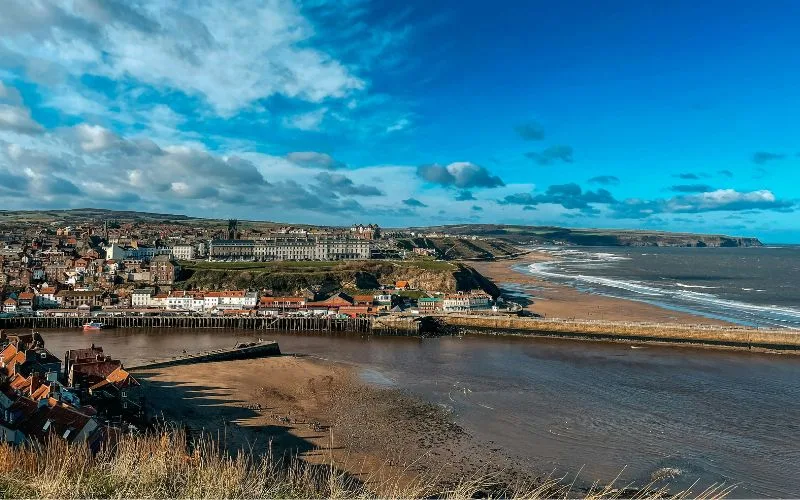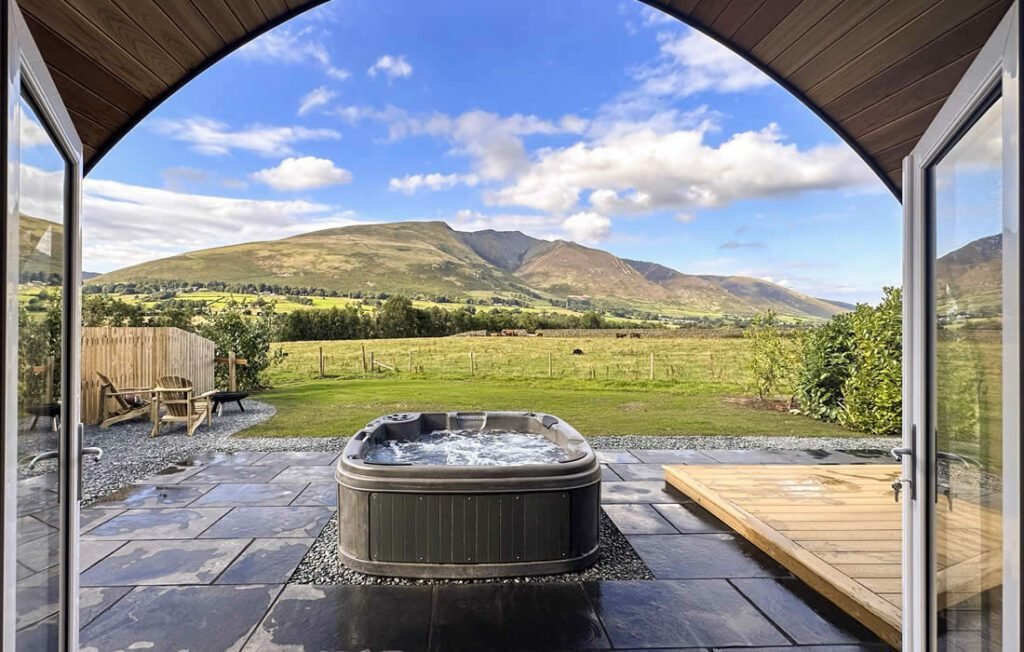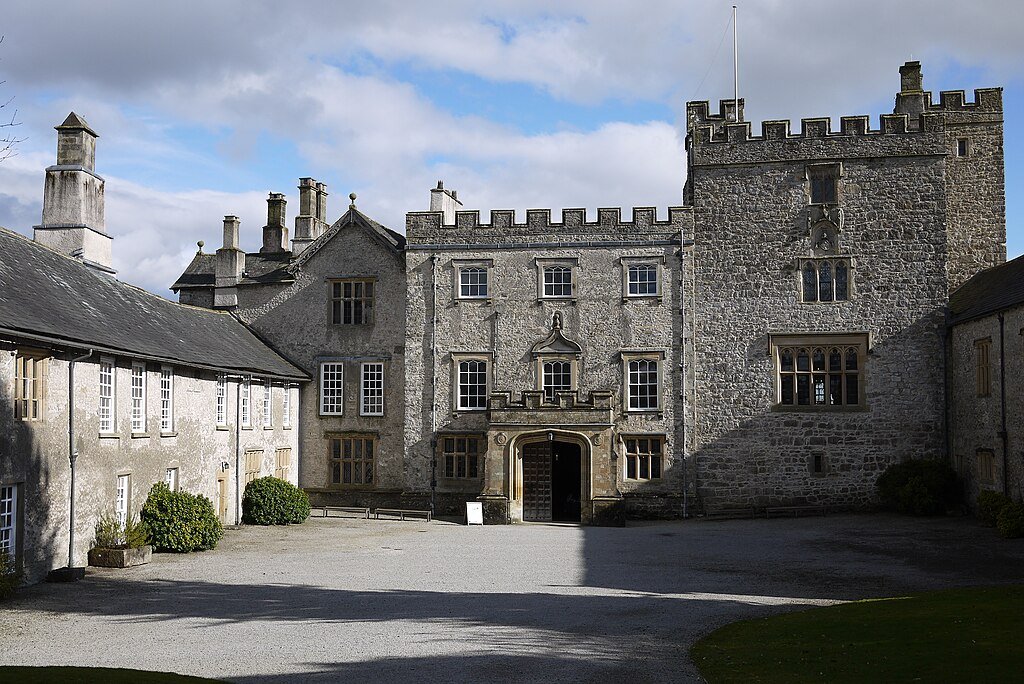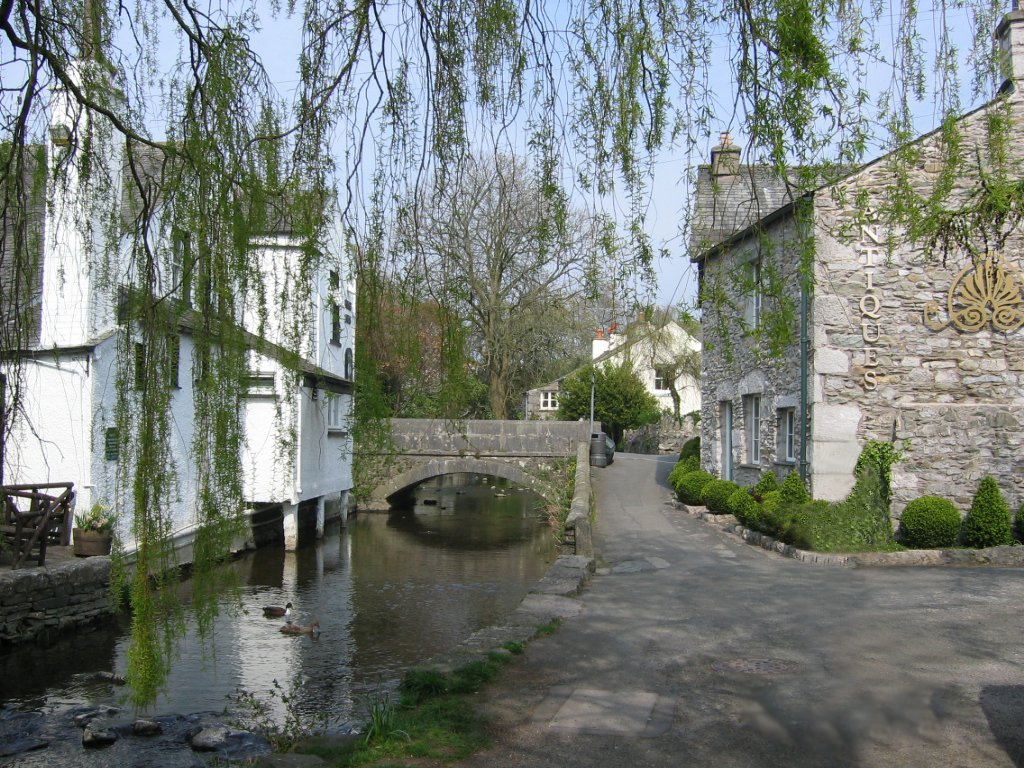
Introduction: Cumbria’s Hidden Village Escapes
Cumbria’s Hidden Village Escapes: Are you dreaming of a getaway where the loudest sound is the whisper of the wind through ancient trees, and the only crowds you encounter are flocks of Herdwick sheep? While the Lake District’s iconic peaks and bustling towns rightly draw visitors from across the globe, Cumbria holds a deeper secret: a collection of hidden villages and tranquil valleys that offer the ultimate peaceful escape. This isn’t just about avoiding the crowds; it’s about discovering the authentic heart of a region, where history breathes in every stone, nature reclaims its wild spirit, and the pace of life slows to a restorative rhythm.
Join us as we journey beyond the well-trodden paths to uncover Cumbria’s lesser-known places, perfect for families seeking gentle adventures, couples desiring romantic seclusion, and solo travellers yearning for quiet reflection.
A Journey Through Time: Cumbria’s Enduring Heritage
To truly appreciate the tranquillity of Cumbria’s hidden villages today, it helps to understand the rich tapestry of history that has shaped this remarkable landscape. Human presence here dates back at least 5,000 years, with early Mesolithic settlers finding refuge in caves and Neolithic communities establishing a major “axe factory” in Langdale, whose stone tools travelled across Great Britain.
The Roman Empire arrived around AD 85, incorporating much of modern-day Cumbria into England. They left an indelible mark with fortifications like the fort of Glannoventa at Ravenglass and the monumental Hadrian’s Wall in the north, a UNESCO World Heritage Site that still stands as a testament to their enduring presence. These structures weren’t just for defence; they were vital arteries for trade and supply, connecting this rugged frontier to the wider empire.
The medieval period saw the rise of powerful religious centres, such as the magnificent Cartmel Priory, an imposing 800-year-old building that continues to serve as a place of worship. Lanercost Priory, a 13th-century Augustinian church near Hadrian’s Wall, also bravely withstood frequent attacks from Scottish raiders, highlighting the region’s resilient spirit. This turbulent era, particularly the 15th and 16th centuries, was dominated by the Border Reivers – notorious raiders who prompted the construction of numerous fortified Tower Houses and Pele Towers, whose remnants still dot the landscape, whispering tales of a wilder past.
Cumbria’s abundant natural resources also played a pivotal role in the Industrial Revolution. Copper, iron-ore, graphite (giving rise to Keswick’s famous pencil industry), green slate, and gypsum were all extracted from the fells. Notably, in the mid-19th century, half the world’s textile industry’s bobbin supply originated from the Lake District area, exemplified by the preserved Stott Park Bobbin Mill. The arrival of canals and, more significantly, railways from the 1840s onwards, transformed Cumbria, facilitating the export of local produce and inadvertently ushering in the dawn of tourism, as Victorian industrialists built grand mansions around Windermere.
These layers of history – from ancient settlements and Roman occupation to medieval conflicts and industrial innovation – have forged a landscape and a people with a rugged, independent character. The tranquillity you find in these hidden villages today often stands in stark contrast to a dynamic past, enriching your sense of escape and discovery. It’s a reminder that beneath the serene surface lies a profound story, making your visit more meaningful than mere scenic beauty.
Cumbria Today: A Landscape of Evolving Tourism
Cumbria’s tourism landscape is dynamic, reflecting a shift in visitor preferences towards more immersive and tranquil experiences. Recent data from the Scarborough Tourism Economic Activity Monitor (STEAM) reveals fascinating trends. While overall visitor numbers and day visitors saw declines of 14% and 18% respectively compared to 2019 (pre-pandemic), there was a notable 10% increase in overnight stays over the same period. This suggests that visitors are increasingly seeking deeper, longer-duration holidays, prioritising genuine “peaceful escapes” and slow travel over fleeting sightseeing.
The tourism sector remains a cornerstone of Cumbria’s economy, contributing a substantial £4.6 billion in 2024 and supporting almost 75,000 jobs, representing 28% of the county’s workforce. A positive trend is the increased revenue generated outside the traditional summer holiday season, with growth recorded in January, March, and October to December in 2024 compared to 2023. Visitor spending on food and drink is also a significant economic driver, now valued at £1.1 billion, underscoring the importance of local culinary experiences.
Crucially for those seeking hidden gems, the Western Lake District, where many of these tranquil villages are located, holds immense untapped potential. Despite its beauty and opportunities for walking and cycling, this area currently accounts for only 8% of the total Cumbrian visitor spend. This highlights a key opportunity: by promoting these less-explored, yet highly rewarding, areas, we can contribute to a more balanced distribution of tourism benefits across the county, reducing pressure on traditional hotspots and fostering sustainable growth in line with Cumbria’s shared Destination Management Plan.
A pioneering example of this forward-thinking approach is the Wild Ennerdale project, launched in 2003 within the Lake District National Park. This ambitious conservation initiative allows nature to take the lead, significantly reducing human influence and encouraging natural processes like erosion, regeneration, and wildlife movement to shape the valley.
Reduced sheep farming, natural woodland regeneration, and river restoration have fostered increased habitat diversity, making Ennerdale a haven for wildlife, including red squirrels, otters, and rare birds. It stands as a model for future conservation and a unique draw for eco-conscious travellers seeking true wilderness and an opportunity to witness nature’s recovery.
Unveiling the Gems: Our Top Hidden Villages for Tranquillity
Now, let’s explore some of Cumbria’s most enchanting hidden villages, each offering a unique flavour of peace and discovery.
Cartmel: Medieval Charm and Culinary Delights
Nestled in the southern reaches of Cumbria, Cartmel is a truly charming medieval village, often overlooked by those rushing to the central Lakes. Its cobbled streets, ancient priory, and distinctly relaxed atmosphere offer a genuine sense of discovery.
The majestic Cartmel Priory, an imposing building over 800 years old, remains an active place of worship. Visitors can marvel at its unique architecture, featuring ancient chapel carvings, beautiful stained glass windows, grand arches, and fine Renaissance screens. The resonant bells of Cartmel Priory can still be heard each Sunday, a timeless welcome. Just outside the village, Holker Hall and Gardens offers another captivating experience with its beautifully manicured grounds, providing a quieter and equally impressive alternative to other Cumbrian estates. For a unique blend of sport and entertainment, the Cartmel Racecourse hosts nine annual National Hunt (jump) racing events against the backdrop of the Lakeland fells, renowned for their lively, party atmosphere.
Cartmel proudly claims to be the “home of Sticky Toffee Pudding,” a beloved dessert that originated in the village shop’s back kitchen over three decades ago. Beyond this famous sweet treat, Cartmel is a significant gastronomic hub, boasting the Michelin-starred L’Enclume and its sister restaurant, Rogan & Co. The village also features numerous boutique shops, quaint cafes, and local food producers, including Cartmel Cheeses, The Bread Shed, Hales of Cartmel chocolatier, and its own microbrewery. Cartmel’s exceptional culinary scene elevates it beyond a typical quiet village, demonstrating that “peaceful escapes” can also encompass sophisticated gastronomic adventures, appealing to discerning travellers and couples seeking romantic culinary experiences.
Ravenglass: Coastal History and Miniature Adventures
Ravenglass is a quiet coastal village with a unique character, historically a significant Roman port, and uniquely situated on the estuaries of three rivers, the Esk, the Irt, and the Mite, all within the Lake District National Park.
The remarkably preserved remains of the Ravenglass Roman Bath House, part of the Roman Fort of Glannoventa established around AD 130, are a must-see. Its walls stand almost 4 metres high, making them among the tallest Roman structures surviving in northern Britain. Another cherished attraction is the Ravenglass & Eskdale Railway, affectionately known as the “La’al Ratty.” This beloved heritage narrow-gauge railway is one of England’s oldest and longest-surviving.
The 7-mile, 40-minute scenic journey transports passengers from Ravenglass to Dalegarth for Boot, offering expansive views over the coastal estuary and winding through ancient woodlands to the foot of the Scafell Range. The railway offers various carriage types, including cosy covered, half-open, and open-top options, and is notably dog-friendly. Nearby, Muncaster Castle, a historic and reputedly “haunted” castle, features extensive gardens and a World Owl Centre, providing a captivating visit with fewer crowds than some of the more famous Cumbrian estates. It also hosts unique seasonal events, such as the Krankenhaus Festival and Scarecaster.
Ravenglass serves as a unique nexus, offering a compelling blend of ancient Roman history, tranquil coastal beauty, and a family-friendly heritage railway that opens up access to the wild fells and valleys of Eskdale. This versatility positions it as an ideal “hidden gem” that caters to multiple interests—history enthusiasts, nature lovers, and families, all within the overarching “peaceful escape” theme.
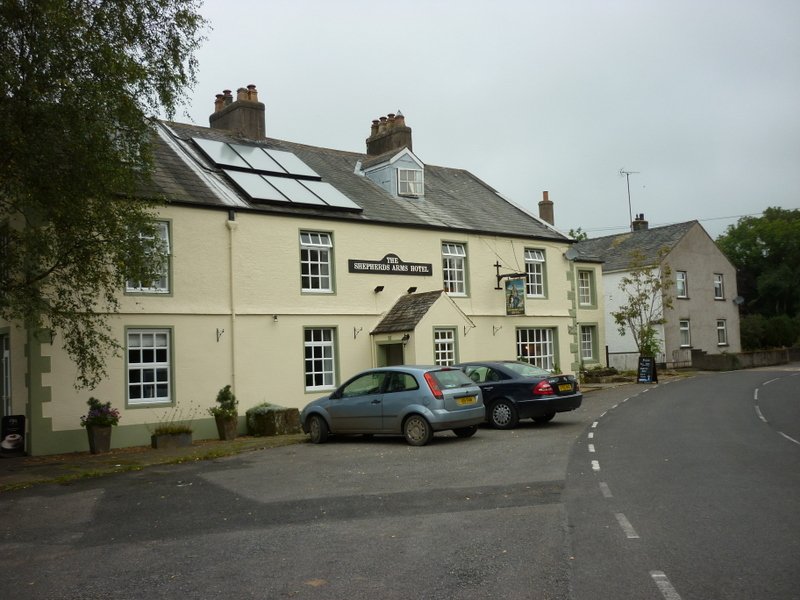
Ennerdale Valley & Ennerdale Bridge: The Wild Heart of Cumbria
For those truly seeking to disconnect and immerse themselves in raw nature, Ennerdale Valley is one of the quietest and most remote areas in the Lake District. It features Ennerdale Water, notably the only road-free lake in the area and the most westerly, surrounded by dramatic fells such as Pillar, Great Gable, and High Stile. This untouched quality offers a profound sense of wilderness.
A significant aspect of Ennerdale is the Wild Ennerdale Partnership, an ambitious and pioneering conservation initiative launched in 2003. Its core vision is to allow nature to take the lead, significantly reducing human intervention and encouraging natural processes like erosion, regeneration, and wildlife movement to shape the landscape. Key changes, such as reduced traditional sheep farming, natural woodland regeneration, and river restoration, have led to increased habitat diversity. Ennerdale has become a haven for wildlife, including red squirrels, otters, and rare birds like the ring ouzel and black grouse, positioning it as a model for future conservation and a unique draw for eco-conscious travellers seeking true wilderness and an opportunity to witness nature’s recovery.
The valley offers many miles of forest tracks and public rights of way suitable for walking, cycling, and horse riding. Specific trails include the family-friendly Smithy Beck Waterfall Walk (an easy, 1-hour stroll), the scenic Liza Path along the river, and the Ennerdale Water circular route (6.5 miles, with some challenging sections at Angler’s Crag). For serious hikers, the challenging Ennerdale Horseshoe, which visits numerous Wainwrights, is a notable option.
The nearby village of Ennerdale Bridge provides essential services and friendly hospitality, including The Gather (a community-run hub with a shop, cafe, and toilets), The Fox & Hounds Inn, and The Shepherds Arms Hotel. Ennerdale’s unique combination of being road-free, profoundly remote, and actively rewilded offers an unparalleled opportunity for a “digital detox” and a truly immersive eco-tourism experience. Some accommodations even note the absence of mobile signal and WiFi, further enhancing the opportunity to disconnect.
Swindale Valley: A True Secluded Sanctuary
For the ultimate in solitude, Swindale Valley is a remote and truly lesser-known area nestled in the far eastern part of Cumbria, offering profound tranquility and scenic beauty.
Swindale is actively managed by the RSPB for wildlife conservation, ensuring its pristine natural state. It is particularly renowned for being “awash with wildflowers” during spring and summer, creating a vibrant and colourful display. The valley provides opportunities for peaceful walks where visitors are “unlikely to encounter many other visitors,” making it an ideal destination for those seeking true solitude. This deliberate conservation effort guarantees a genuinely uncrowded experience, highlighting how ecological preservation can directly contribute to the “peaceful escape” desired by visitors seeking true solitude and a deep connection with nature.
Other Peaceful Pockets
Cumbria’s breadth of “peaceful escapes” extends even further:
- Rutter Force: A charming little waterfall tucked away near the village of Great Asby, often overlooked. Surrounded by lush greenery, it’s perfect for a peaceful picnic or a short, refreshing stroll.
- Scout Scar: A short drive from Kendal, this unique landscape of limestone pavement formations offers some of the best panoramic views over the Lyth Valley and distant fells. The relatively easy walk provides a profound sense of solitude and openness.
- Arnside Knott: Just outside the official Lake District boundaries, this hill offers sweeping views over Morecambe Bay and beyond. It’s a haven for birdwatchers, particularly during migration seasons, with an easy circular walk.
- St Bees Head: Cumbria’s “only Heritage Coast,” this dramatic headland offers stunning clifftop walks along the Irish Sea, with opportunities to glimpse nesting seabirds, including puffins and razorbills, at its RSPB reserve. The quaint village of St. Bees itself features a sandy beach and an ancient priory, providing a perfect spot to unwind.
These diverse locations collectively demonstrate that tranquillity in Cumbria is not limited to one type of landscape, offering something for every type of nature lover and those seeking quietude.
Planning Your Peaceful Escape: Practical Advice
Navigating Cumbria’s hidden villages requires thoughtful planning, but the rewards are immense. Here’s essential advice for a seamless journey.
Getting There & Getting Around
By Train: National Rail services offer scenic journeys into Cumbria. The Tyne Valley Line connects Newcastle to Carlisle, while the incredibly picturesque Settle-Carlisle Line travels from North Yorkshire to Carlisle. The Furness Line connects Barrow from Carnforth and Lancaster, and the Lakes Line leads directly intoHeritage Railways the heart of Windermere village from Oxenholme Lake District. On some routes, you might even experience a steam train journey, adding a nostalgic touch.
By Coach/Bus: National Express operates services to Kendal and Penrith, and Megabus provides budget-friendly options to Lancaster and Gretna, with onward train connections into Cumbria. Extensive local Stagecoach bus services are available throughout Cumbria, including Explorer tickets for hop-on/hop-off flexibility, and open-top bus tours for scenic enjoyment. This network makes it very easy to explore the county without a car, with most train stations on bus routes for convenient onward travel.
Heritage Railways: The Ravenglass & Eskdale Railway and the Lakeside & Haverthwaite Railway are not merely attractions but practical and scenic ways to access more remote areas and connect with other points of interest. The “La’al Ratty” in particular is a fantastic way to reach remote parts of the Lake District by public transport, with miniature steam trains stopping at small stations throughout Eskdale, an excellent area for walking.
Driving Considerations: While driving offers maximum flexibility for exploring hidden villages, it’s important to acknowledge that some Cumbrian roads, such as the infamous Hardknott Pass, can be narrow, steep, and challenging. Visitors are advised to check road conditions, especially in winter, and to be confident behind the wheel. Information on parking availability will be provided where relevant, such as in Ravenglass and at Bowness Knott for Ennerdale access.
Community Transport & Accessibility: Cumbria Community Transport is a registered charity providing affordable, accessible transport. They operate a fleet of 16-passenger seat vehicles, all of which are wheelchair accessible and have low-level entry steps. This service is available for various community groups and can be hired on a self-drive basis or with a voluntary driver. The Rural Wheels scheme offers transport from rural homes to the nearest town or public transport connection, and Voluntary Social Car Schemes provide transport for all community members. These services are invaluable for visitors with specific accessibility needs or those wishing to explore areas less served by conventional public transport.
When to Go: Embracing Cumbria’s Seasons
Cumbria is beautiful year-round, with each season offering a unique appeal for a peaceful escape.
Spring (March-May): This is a picturesque time as forests and gardens reawaken, with daffodils and bluebells blanketing the valleys, and plenty of baby lambs in the fields. March can offer bargains before the peak season (April to October) begins, and May is historically one of Cumbria’s driest months, falling between Easter and summer crowds. Easter holidays often feature family events at historic buildings and gardens, such as Beatrix Potter-themed Easter egg hunts.
Summer (June-August): Expect warmer, drier weather, with temperatures potentially rising to 19°C. Summer showers are common, so preparation for rain is advisable. This period offers the best walking conditions, with expansive views from the fells, and is ideal for wild swimming in the lakes, tarns, and rivers. The outdoor events calendar is in full swing, featuring festivals like Lakes Alive arts festival and Kendal Calling. However, July and August are peak months due to UK school holidays, so expect more visitors and potential traffic.
Autumn (September-November): As crowds disperse, the beautiful autumn colours become prominent, especially in October when the average temperature is around 9°C. This season is excellent for fall foliage, mountain biking, and walking, with enough daylight for higher fells. Evenings can be chilly, and by late autumn, it can become damp and windy, requiring appropriate attire.
Winter (December-February): Crisp air and snow-capped hills create an invigorating winter break. Lower fells typically see about 20 days of snow per year, rising to 67 days on mountain tops. Days are short, cold, and wet, but clear skies reveal incredible scenery with snow-covered mountains and frost-topped forests. December brings beautifully decorated villages, Christmas markets, and festive events like the Keswick Victorian Fayre and Carlisle Beer Festival. When the weather is inclement, cozy cafes and pubs offer Northern hospitality.
Visitors seeking fewer people on trails should consider a break outside the peak season of April to October. The shift in visitor patterns, with an increase in overnight stays and revenue generated outside traditional summer holidays, indicates that visitors are actively seeking tranquility and authentic experiences over peak-season crowds, making off-peak visits particularly appealing for peaceful escapes.
Where to Eat and Stay Nearby
The hidden villages of Cumbria offer a range of charming dining and accommodation options, from traditional inns to boutique hotels and self-catering cottages.
Dining:
- Cartmel: A culinary hotspot, home to the Michelin-starred L’Enclume and Rogan & Co. For a traditional experience, The Royal Oak offers seasonal comfort food and Fell beer in a 17th-century village pub with a riverside beer garden. The Courtyard Cafe at Holker Hall provides seasonal menus focusing on locally sourced ingredients, with indoor and outdoor seating, and is dog-friendly.
- Ravenglass: The Pennington Hotel’s Estuary Bar & Grill offers high-quality food overseen by Head Chef Helen, who uses locally sourced produce, including fresh fruit and vegetables from Muncaster Castle Gardens. For casual dining, Anna’s Cafe Bar overlooks the Marina in Whitehaven, while Zest Harbourside specializes in casual dining with an unpretentious menu. The Sawmill Cafe and Farm Shop, on the banks of the River Irt, is ideal for breakfast, brunch, or lunch in a stunning location.
- Ennerdale Bridge: The Fox & Hounds Inn and The Shepherds Arms are traditional Lakeland inns welcoming walkers, dogs, and families. The Fox & Hounds offers real ales from local breweries and pub favourites like steak and Cumberland ale pie. The Shepherds Arms prides itself on Cumbrian ale and produce, serving hearty, wholesome pub-style dishes, including Lake District lamb and beef. The community-run The Gather also provides a cafe.
Accommodation:
- Cartmel: L’Enclume offers 16 elegant, individually designed bedrooms located in and around the village, with room reservations includinHeritage Railwaysg breakfast at Rogan & Co. The Royal Oak also provides cosy rooms in the heart of the village.
- Ravenglass: The Pennington Hotel, a historic building extensively modernised, offers 22 well-appointed bedrooms with luxury bedding and modern amenities. It is centrally located in the village, right on the tidal estuary, and is very dog-friendly. Birkby Lodge offers self-catering accommodation nearby.
- Ennerdale Valley: The Ennerdale Country House Hotel is a Grade II listed building nestled within 5 acres of tranquil landscaped gardens, offering comfortable rooms and good food. For a more rustic and remote experience, YHA Ennerdale provides a friendly hostel environment with a bar, shared kitchen, and stunning views. The Wild Wool Barn offers luxury bunk barn accommodation and camping overlooking Ennerdale Water, providing a perfect base for those wanting to escape mobile signal and WiFi for a true digital detox. The Shepherds Arms Hotel in Ennerdale Bridge also has eight cosy guestrooms, ideal for walkers.
- General Cumbria: Other notable options include The Grange Hotel in Grange-over-Sands for old-fashioned charm, The Haweswater Hotel for Art Deco style overlooking the reservoir, and The Punch Bowl Inn near Kendal for a country escape with good food. Self-catering options like Brownber Hall and Shepherd’s Cottage offer larger group accommodations or secluded retreats.
Curated Journeys: Itineraries for Every Traveller
To help you plan your perfect peaceful escape, here are some themed travel routes designed for different types of visitors.
For Families: Coastal History & Miniature Trains
- Day 1: Ravenglass Roman & Rail Adventure: Begin in Ravenglass, exploring the impressive Roman Bath House, one of the tallest Roman structures in northern Britain. Then, embark on a journey aboard the Ravenglass & Eskdale Railway (“La’al Ratty”), a 7-mile miniature steam train ride through stunning scenery to Dalegarth for Boot. Families can enjoy the children’s outdoor play area and museum at Ravenglass Station.
- Day 2: Muncaster Castle & Wildlife: A short distance from Ravenglass, Muncaster Castle offers extensive gardens, a World Owl Centre, and a rich history, providing a full day of exploration. The castle often hosts family-friendly events.
- Day 3: Coastal Exploration & Beach Fun: Head to St Bees Head, Cumbria’s only Heritage Coast, for dramatic clifftop walks and opportunities to spot seabirds at the RSPB reserve. The quaint village of St. Bees offers a sandy beach, perfect for unwinding and enjoying the coastal environment.
For Couples: Romantic Retreats & Culinary Delights
- Day 1: Cartmel’s Charm & Gastronomy: Start in Cartmel, wandering its cobbled streets and visiting the ancient Cartmel Priory for a sense of history and quiet contemplation. Indulge in the village’s famous sticky toffee pudding. For the evening, enjoy a romantic meal at one of Cartmel’s acclaimed restaurants, such as the Michelin-starred L’Enclume or Rogan & Co.
- Day 2: Scenic Vistas & Hidden Waterfalls: Explore the area around Cartmel. Take a stroll to Holker Hall and Gardens for beautifully manicured grounds and a quieter alternative to other estates. Alternatively, for a more active and secluded experience, drive towards Great Asby to discover Rutter Force, a charming waterfall perfect for a peaceful picnic. In the evening, find a cosy Lakeland pub for a warm atmosphere.
- Day 3: Tranquil Walks & Spa Indulgence: Head to Tarn Hows, a serene small lake between Coniston and Hawkshead, for an easy circular walk offering stunning views and reflections. Conclude the romantic escape with a relaxing spa day at one of Cumbria’s luxurious spas, such as Lodore Falls Spa near Keswick.
For Solo Travellers: Solitude, Nature & Reflection
- Day 1: Ennerdale’s Wild Embrace: Journey to Ennerdale Valley, the Lake District’s only road-free lake, for a true digital detox and immersion in wilderness. Start with an easy walk like the Smithy Beck Waterfall Walk or the Liza Path. Stay at a remote bunkhouse like The Wild Wool Barn for an authentic, off-grid experience.
- Day 2: Rewilding & Remote Fells: Dedicate the day to exploring the Wild Ennerdale project, observing the rewilding efforts and diverse wildlife, including red squirrels and rare birds. For a challenging hike, consider a section of the Ennerdale Horseshoe. The nearby village of Ennerdale Bridge offers essential amenities at The Gather.
- Day 3: Swindale Valley’s Seclusion & Birdwatching: Venture to Swindale Valley, a remote and lesser-known area managed by the RSPB, ideal for peaceful walks and birdwatching, especially during spring and summer when wildflowers are abundant. Alternatively, explore Arnside Knott, just outside the Lake District boundaries, for sweeping views over Morecambe Bay and excellent birdwatching opportunities.
Seasonal Delights: Events and Special Experiences
Cumbria’s hidden villages and surrounding areas host a variety of seasonal events and special experiences that enhance a peaceful escape, offering unique cultural and natural encounters throughout the year.
Spring:
- Wildflower Displays: Spring sees Swindale Valley awash with wildflowers, creating a vibrant display for peaceful walks. Similarly, the Rannerdale Knotts are famous for their breathtaking bluebell coverage in late April.
- Holker Hall Spring Fair: Holker Hall and Gardens, near Cartmel, hosts a Spring Fair, offering a delightful experience amidst beautiful gardens.
Summer:
- Cartmel Race Days: The Cartmel Racecourse hosts nine annual National Hunt racing events from late May to August Bank Holiday. These days are known for their thrilling races combined with a relaxed party atmosphere, funfairs, and live music, attracting thousands of visitors.
- Cartmel Food Market: Held every third Friday of the month in Devonshire Square during the summer, this market showcases local produce, from fresh fish and meats to sweet treats, reflecting Cartmel’s renowned food scene.
- Cumbria Steam Gathering: Over the last weekend in July, Cark Airfield (near Cartmel) hosts this colourful and noisy meeting of vintage vehicles and steam engines, featuring demonstrations of historic skills, local food, and entertainment.
- Grasmere Sports and Show: Held in late August, this event is a celebration of traditional Cumbrian sports and culture, including Fell running, Westmorland Wrestling, and Hound Trailing.
- Krankenhaus Festival: Muncaster Castle hosts this annual micro-festival in late August, celebrating music, poetry recitals, film screenings, and book readings.
Autumn:
- Westmorland County Show: Taking place in mid-September, this major livestock show near Crooklands is one of the UK’s favourite shows, featuring cattle, sheep, and pigs, alongside other attractions.
- Whitehaven Rum Butter Festival: A family-friendly event in mid-September in Whitehaven, featuring entertainment, local artisan makers, and rum butter baking competitions.
- The Winter Droving: Penrith marks the end of the harvest season and the beginning of the “darker half” of the year with this iconic cultural event in late October. It’s a celebration of light, fire, and rural life, featuring masked musicians, street performers, giant animal lanterns, and a vibrant market.
- Scarecaster at Muncaster Castle: For those aged 16 and over, this spine-tingling Halloween event in late October/early November offers a fright fest where nightmares reign, building on the castle’s haunted reputation.
Winter:
- Northern Whisky Festival: Held in Carlisle in early November, this festival celebrates world-class whisky, distiller excellence, and Northern heritage.
- Christmas in Cartmel: The village supports annual ‘Christmas in Cartmel’ celebrations, offering a festive atmosphere in a charming setting.
- Festive Markets: Various villages and towns will be beautifully decorated and lit up for Christmas, hosting markets and festive events.
These seasonal events offer diverse experiences, from traditional rural shows and culinary festivals to unique cultural celebrations and thrilling Halloween experiences, ensuring that Cumbria provides engaging activities throughout the year, even in its quieter corners.
Conclusion
The hidden villages of Cumbria offer a profound and rewarding alternative to the region’s more bustling tourist hubs. They are not merely quiet; they are vibrant pockets of history, natural beauty, and unique local character, perfectly aligned with the growing desire for slower, more authentic, and less crowded travel experiences.
By venturing into these tranquil corners—from the culinary delights of Cartmel and the Roman heritage of Ravenglass to the wild rewilding of Ennerdale and the secluded beauty of Swindale Valley—you unlock a deeper connection with Cumbria’s landscapes, heritage, and communities. Whether you’re a family seeking gentle adventures, a couple desiring romantic seclusion, or a solo traveller yearning for quiet reflection, these hidden gems provide the ideal backdrop for a truly restorative escape.
So, pack your bags, embrace the slower pace, and discover the peaceful magic that awaits in Cumbria’s hidden village escapes. Your tranquil adventure begins now.
